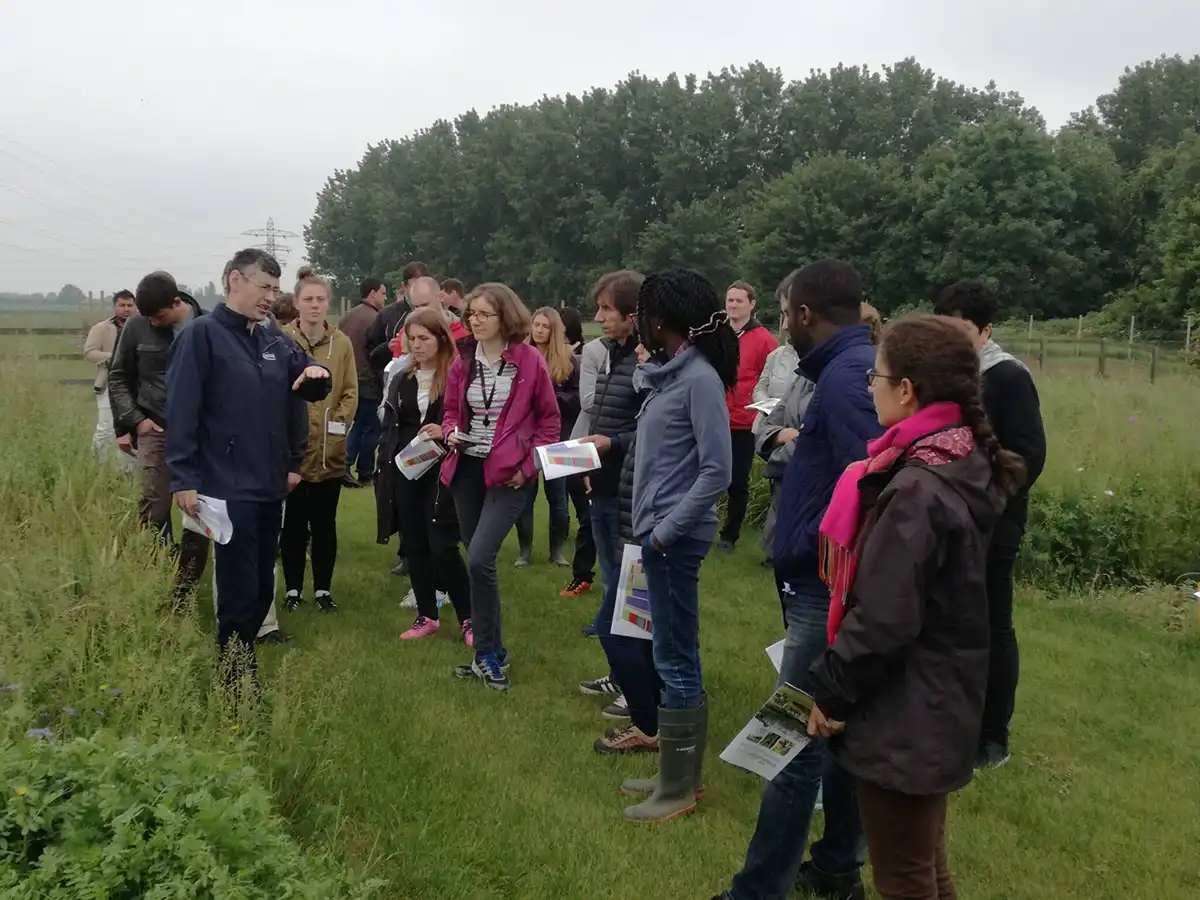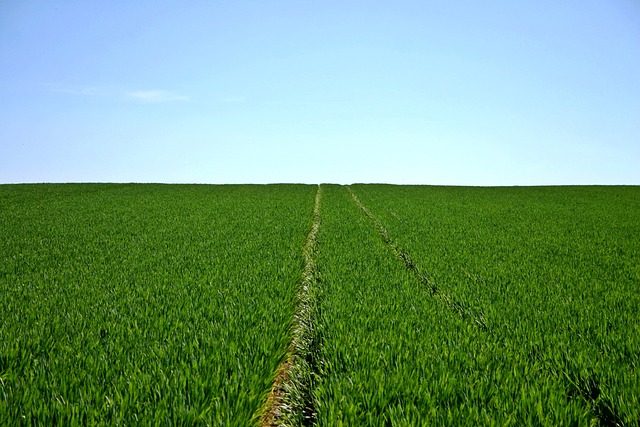In the previous issue of European Seed, we looked at several new EU Research and Innovation projects, such as CHIC, INVITE, CropBooster-P and BRESOV. In this issue we look at one of those R&I projects that was recently finished, namely the WHEALBI project. This project was started in the beginning of 2014, and stems from the strong conviction that — considering the severe global changes to improve wheat and barley production — it will be necessary to better exploit knowledge from basic science in order to develop new varieties and innovative cropping systems. The ultimate target was to improve European wheat and barley production in competitive and sustainable cropping systems.
Gilles Charmet, Coordinator of the WHEALBI project and Sébastien Crepieux, ARCADIA International, WHEALBI communication leader, explain there were many reasons why it was necessary to start this project.
“Breedingis constantly evolving, as needs from the consumer are changing, as the climate may drastically change the way agriculture is performed and as citizens are more and more concerned by environmental issues,” says Charmet. “As Europe is the first producer for wheat and barley, it has a duty to maintain its capacity to satisfy an increasing world demand while addressing challenges of climate change and sustainability of agriculture.”
Over the last few years, research and breeding also focused more on the importance of genetic resources to bring sustainable progress to the release of new varieties. For these reasons, he says, it was really needed to start this WHEALBI project, which full name is “Wheat and Barley Legacy for Breeding Improvement”.
[tweetshare tweet=”Europe is the 1st producer for wheat & barley, so it has a duty to satisfy an increasing world demand while addressing climate change and sustainability – Gilles Charmet” username=”EuropeanSeed”]
At the very beginning of the project, he says they dreamed of being able to provide whole genome sequence data of 1,000 wheat-barley varieties, as animal geneticists did with the 1,000-bulls genome project (http://www.1000bullgenomes.com/). However, it was not feasible at a reasonable cost and they had to restrict the sequencing to the coding part (“genes”).

“Besides, we decided to obtain as many data as possible on these 1,000 varieties, coming from field trials and a wide range of specific evaluations, particularly for adaptive traits (disease, frost, drought tolerance…),” says Crepieux. “And finally, these genetic studies were completed by agronomy, through the testing of a subset of varieties (covering the observed range of diversity) in different cropping systems, including no-tillage (conservation agriculture, which enables better carbon storage in the soil) and organic husbandry.”
Getting the Private Breeding Sector Involved
Charmetsays the private sector was involved in many ways. First of all, two breeders participated in the consortium: SIS, an SME Italian company which was involved in different Work Packages (WPs) related to breeding and agronomy, and the large German company KWS, which was leading the big and very applied WP on pre-breeding, involving many other partners. Secondly, the private sector was involved through dissemination and communication actions.
“For example, six training sessions have been organized all along the project (running from 2014 till the end of 2018), many of them targeting breeders and young breeders, for example the ones on new phenotyping techniques, or the one on pre-breeding,” explains Charmet.
Third, Charmet says they organized a final stakeholder meeting at the European Seed Association in Brussels, which was the occasion to present directly the results to the association grouping almost all European breeders and to the European Commission (see: https://www.whealbi.eu/final-stakeholders-forum-4th-december-2018-brussels/). Breeders were also reached all along the project through targeted newsletters, the website and videos about the project.

Achievements of the WHEALBI project
According to Crepieux, themain concrete achievements are:
- A publicly accessible collection of 1,024 geo-referenced inbred lines of wheat and barley accessions chosen from across the geographic range, to broadly represent the whole species and focusing on germplasm more adapted to European conditions;
- The deep sequence (5-20X) of the exomes of the same wheat and barley accessions allowing extensive study of genetic variation and evolution across geographical and historical ranges;
- The life history trait and phenotypic data from all wheat and barley accessions grown in multiple environments along a wide climatic gradient in Europe, from Scotland to Israel;
- More detailed phenotypic data of a selected subset of wheat and barley accessions from a high-throughput/precision phenotyping platform, e.g. canopy development, disease scores, frost and drought tolerance;
- A data repository and management system containing all of the above data with a unique access portal;
- An interpretation of the observed patterns of diversity in relation to geography and environment, published in high standard journals;
- A list of candidate genes and alleles involved in key traits such as grain quality, frost and drought tolerance and resistance against fungal diseases;
- Pre-breeding pipelines using up-to-date statistical approaches and tools to integrate new useful variation into applied breeding programmes, including those from old varieties and wild relatives;
- The identification of new sustainable crop management systems and their economic evaluation at both farm and EU levels;
- The identification of best ideotypes suited for innovative sustainable cropping systems, with reduced environmental impact (in terms of pollution, energy use, greenhouse gas emissions);
- And finally, advices to policy makers at EU level on project related impacts (e.g. in relation to support agriculture, agro-environment and other CAP – Common Agricultural Policy – related issues).
[tweetshare tweet=”One of the WHEALBI project achievements is a list of candidate genes and alleles involved in key traits such as grain quality, frost and drought tolerance and resistance against fungal diseases. – Sébastien Crepieux” username=”EuropeanSeed”]
Was this EU money well spent?
“Yes, we really think it was,” says Charmet. “Of course, we always think we could do better, as for example for genotyping, where the cost of genotyping from the beginning of the project has still decreased a lot, and the level of putative information available increased a lot. So, the money used at the beginning could have been better used at the end. But we needed the genotyping, to do the research anyway. We think we have done all possible things with the money we obtained from the European Commission to try to solve the numerous complex questions they raised in the initial Call for Proposals.”
What happens now?
Crepieuxsays they are finalizing the last reporting to the Commission, and the last actions of disseminating the results. The last newsletter released in December 2018 gave feedback about the five years of the project (through interviews of the WPs leaders and a Ph.D.). They also explained where to find the results, including the link and explanation to the genomic and phenome legacy: the database with all the genotyping and phenotyping data of the 500 genetic resources of wheat and 500 genetic resources of barley. Many research consortia have already asked access to this database, and will start to use the results, something the they werereally proud of.
[tweetshare tweet=”Many research consortia have already asked access to the wheat & barley database, and will start to use the WHEALBI results. – Sébastien Crepieux” username=”EuropeanSeed”]
Breeders’ Benefits
All cereal breeders will have access to both the seed material and the data collected during the project. They are free to use as they please in their own programmes, e.g. for initiating new crosses. Statistical methods and pipelines are also freely available, most of them in so called ‘R libraries’.
But when will the first wheat and barley varieties arrive on the market, that have benefitted from this project?
Crepieuxsays it is really hard to say as WHEALBI was involved in pre-breeding and not on the final step of breeding to release varieties. This means that the direct output are not varieties ready for the market, but rather knowledge to orient new crosses, methods to better select in progenies and concretely improved lines to be used as genitors in crosses, for example with characterized resistances.
“Five to 10 years may then be required to develop a commercial variety from WHEALBI outputs,” Crepieux states.
[tweetshare tweet=”In 5 to 10 years the first wheat or barley varieties may become available as a result of the WHEALBI project. – Sébastien Crepieux” username=”EuropeanSeed”]
Moving forward, Charmetsays there are a few things he would do differently, as they asked this question for the last newsletter to all of their WP leaders, and the answers were ranging, from a better WP integration, to a better tracking of genetic resources or the focus on less scientific questions to go deeper on less fields.
“Anyway, I think personally that we should have been more cautious in the selection of the WHEALBI collection: ensure that all material was freely available for distribution according to PGRFA regulations and suited for all kinds of studies (evolution and breeding),” Charmet says. “We have also been too optimistic with the short delay we had to obtain raw sequences and to curate them into exploitable form. Nevertheless, all tasks have been achieved before the end of the project, although many data remain to be exploited and valorized in a close future.”
Where on the web:https://www.whealbi.eu/












